The Galápagos tortoise stands tall with scaly skin that looks almost prehistoric. These tortoises live on seven of the Galápagos Islands, with twelve subspecies of varying sizes. Some Galápagos tortoises weigh over 900 pounds, making them the largest existing tortoise species! Tortoises on rainy highlands have domed shells and shortened necks, while on drier lowlands, they have saddleback shells and elongated necks. Although people often say tortoises are slow, the Galápagos tortoise moves faster than expected. Given how intriguing these tortoises are, here are 10 incredible Galápagos tortoise facts for you to explore!
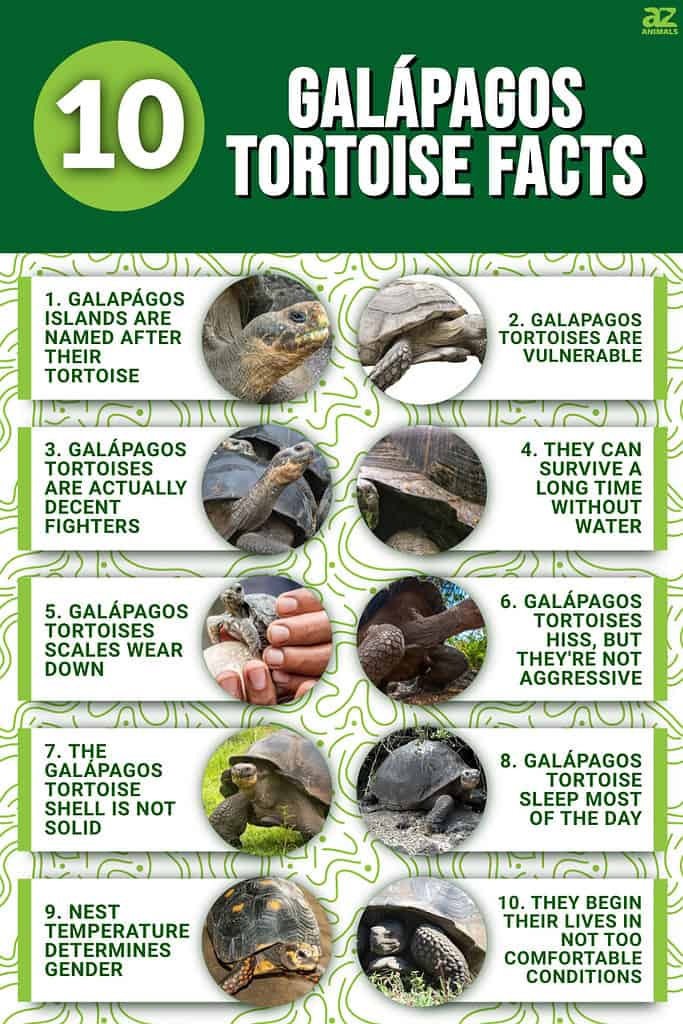
1. Galapágos Islands are named after their tortoise
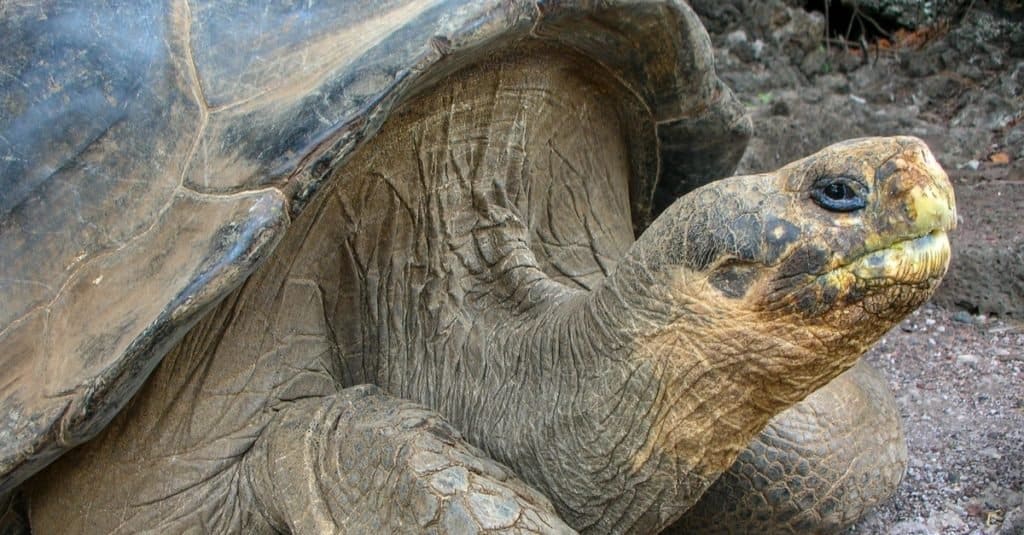
Lonesome George was a male Pinta Island tortoise and the last known individual of the species on the Galapagos Islands, Ecuador
©evenfh/Shutterstock.com
The Spanish term “galapago,” from which the name “Galápagos” is derived, refers to a saddle. However, this is because early explorers misinterpreted the shape of the tortoise shells for a saddle. Humans used to ride saddleback tortoises when they first discovered the islands, but this practice has been banned due to the harm it does to the tortoises.
2. Galapagos tortoises are vulnerable

In contrast to juveniles, adult Galápagos tortoises have relatively few natural predators.
©Svetlana Foote/Shutterstock.com
The Galápagos Islands were home to 15 subspecies of Galápagos tortoises during Charles Darwin’s 1835 expedition. Today there are just 12 known subspecies left, and several are in danger of extinction due to declining populations. From the 17th to the 19th century, around 100,000 were killed for food – mainly by pirates and whalers. Nowadays, they face new threats from introduced species. This is because cats and dogs prey on their eggs and juvenile tortoises while livestock such as cattle threatens their food supply by grazing the same land. However, in contrast to juveniles, adult Galápagos tortoises have relatively few natural predators. Unfortunately, these tortoises are still officially classed as a vulnerable species.
3. Galápagos tortoises are actually decent fighters
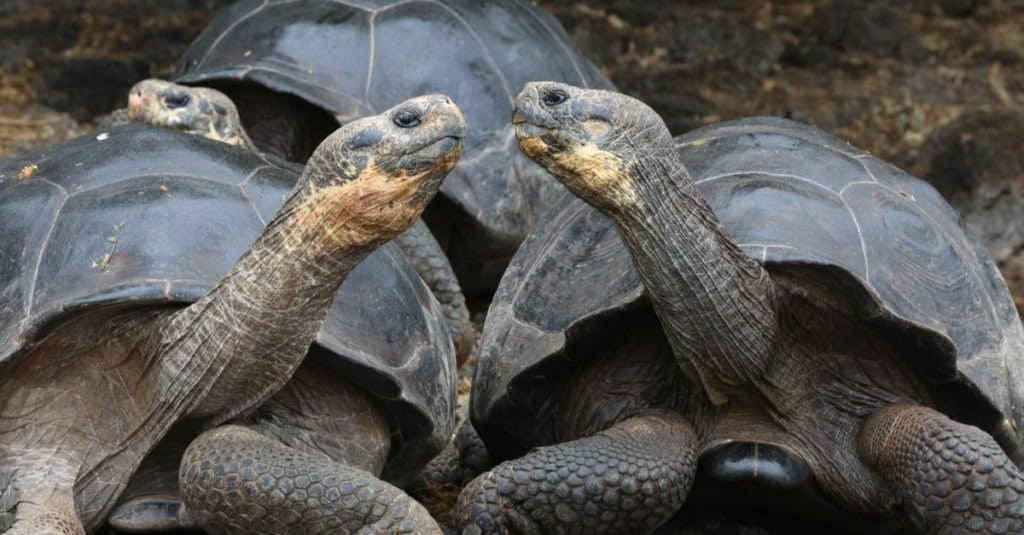
The loser in a fight will eventually avert his gaze and slink away.
©Ian Kennedy/Shutterstock.com
Seeing Galápagos tortoises “fight” is quite a sight. These guys will look at each other angrily before beginning to fight, pushing each other around and trying to bite each other. Size doesn’t always win, though, as a smaller tortoise with a longer neck may be able to knock down a much larger one if he can get his head high enough. The one who loses the fight will eventually avert his gaze and slink away.
4. They can survive a long time without water
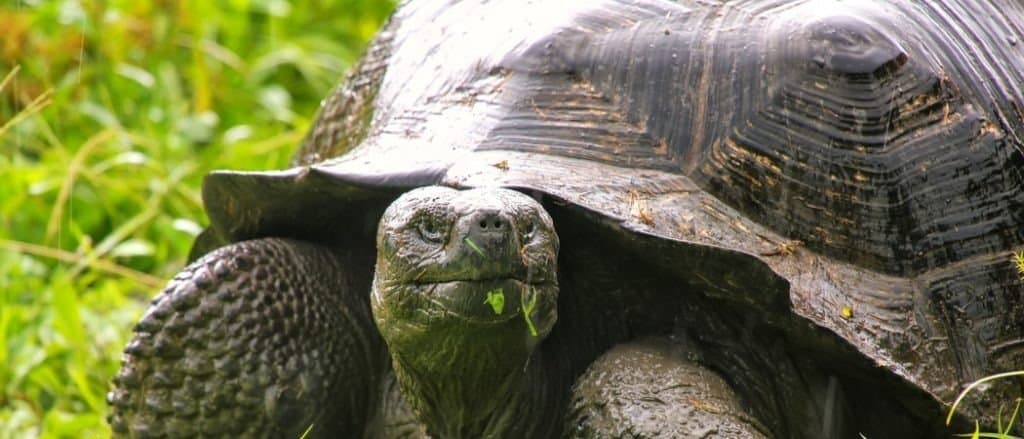
Because of their slow metabolism, Galapagos tortoises can store water inside their body for a long time.
©Don Mammoser/Shutterstock.com
Tortoises in the Galápagos Islands have a remarkable ability to go an entire year without water! How do they go about it? Well, for a start, they can obtain water from the grass and cactus that they eat. Also, they can store water inside their body for a long time due to their slow metabolism. Therefore, their water and body fat reserves allow them to survive for long periods without taking in anything else.
5. Galápagos tortoises scales wear down

Tortoises on rainy highlands have domed shells and shortened necks.
©Jess Kraft/Shutterstock.com
The scalloped (scoot) edges of the Galápagos tortoise’s shell and the front leg scales get worn away with age. Eventually, the scutes get worn almost completely smooth.
6. Galápagos tortoises hiss, but they’re not aggressive
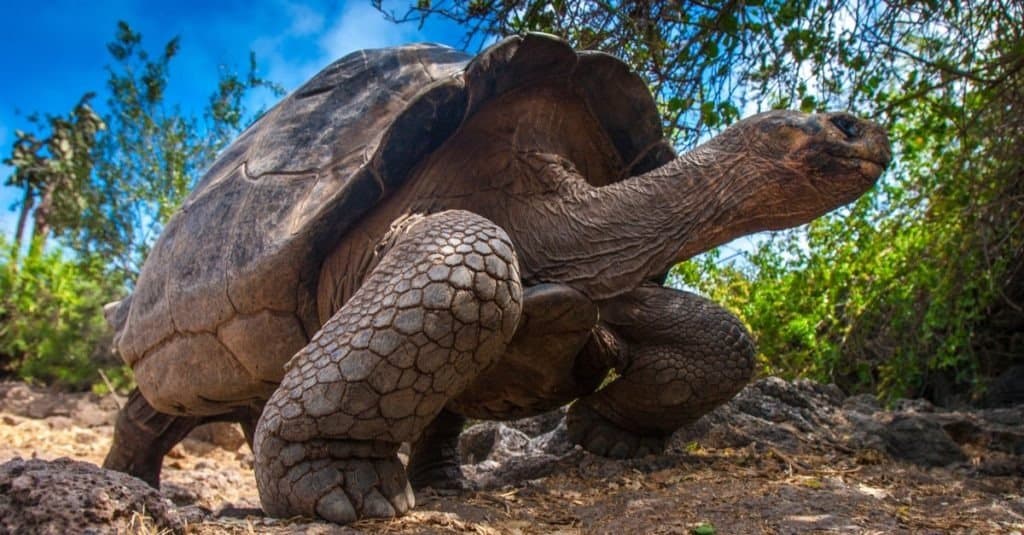
Galapagos tortoises hiss when they feel threatened.
©FOTOGRIN/Shutterstock.com
The hissing of turtles is an instinctive reaction, not a means of alarm or startling you. When threatened, turtles will immediately pull their heads back into their shells, emitting a loud hissing noise as they do so. They exhale when they move their heads back, creating a hissing sound. Incredibly, they need to exhale to expel air from their lungs, allowing them to properly fit their head inside their shell.
7. The galápagos tortoise shell is not solid

Although heavy, the Galapagos tortoise is quite capable of lifting itself.
©Fotos593/Shutterstock.com
Galápagos tortoises are extremely heavy, but surprisingly, their shell is not the culprit. This is because their shells are not solid, and instead, they are a honeycomb structure that consists of small air chambers.
8. Galápagos tortoise sleep most of the day
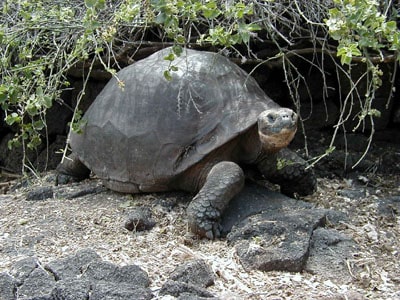
Galapagos Tortoises sleep up to 16 hours a day.
©Esculapio – Public Domain
The giant tortoises of the Galápagos spend up to 16 hours napping daily. They may sleep with half of their body submerged in the dirt, water, or a bush to keep warm during cold nights. While the sun is out, they wallow in the mud, which helps them maintain a comfortable body temperature. When not slowly ambling over the islands, the Galápagos tortoise loves nothing more than a good lie-in or siesta.
9. Nest temperature determines gender
In warmer conditions, a greater proportion of female eggs will hatch.
©Miguel Andrade/Shutterstock.com
After mating, the female will go to an area with dry, sandy soil. Depending on the size of the nest, she digs a hole and deposits anywhere from two to sixteen eggs. The temperature of the nest determines the hatchlings’ gender. In warmer conditions, a greater proportion of female eggs will hatch. However, cooler sand temperatures lead to an increase in males. Incubation takes around 130 days, and upon hatching, the juvenile tortoises need to dig their way up to the surface.
10. They begin their lives in not too comfortable conditions
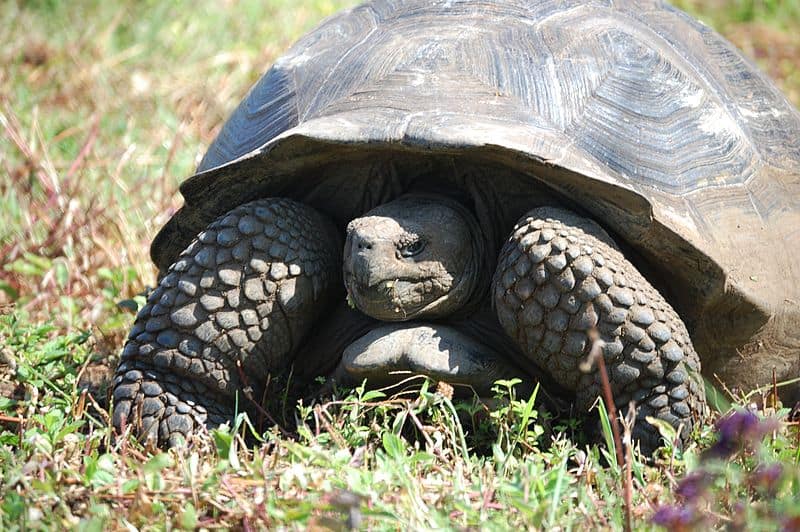
A female Galapagos tortoise can lay anywhere from 8 to 16 eggs.
©NOAA Photo Library / CC BY 2.0, Flickr – License
When preparing to lay their eggs, the female turtles dig a hole in the sand about 12 inches deep and then quickly urinate in it. This stops the sand from piling up on the eggs. After that, she buries her eggs within it. A female Galapagos tortoise can lay anywhere from 8 to 16 eggs. The eggs have a tough shell and are about the size of a tennis ball.
The photo featured at the top of this post is © Joseph Alexander Cruz/Shutterstock.com
Thank you for reading! Have some feedback for us? Contact the AZ Animals editorial team.






